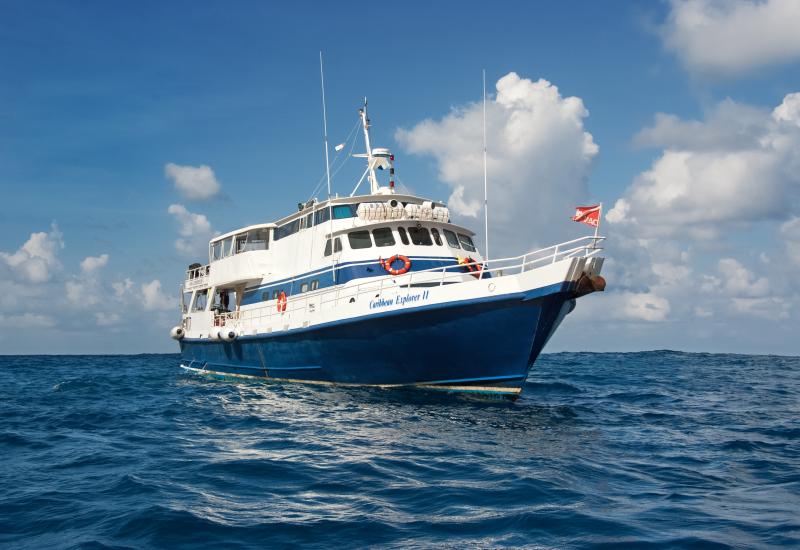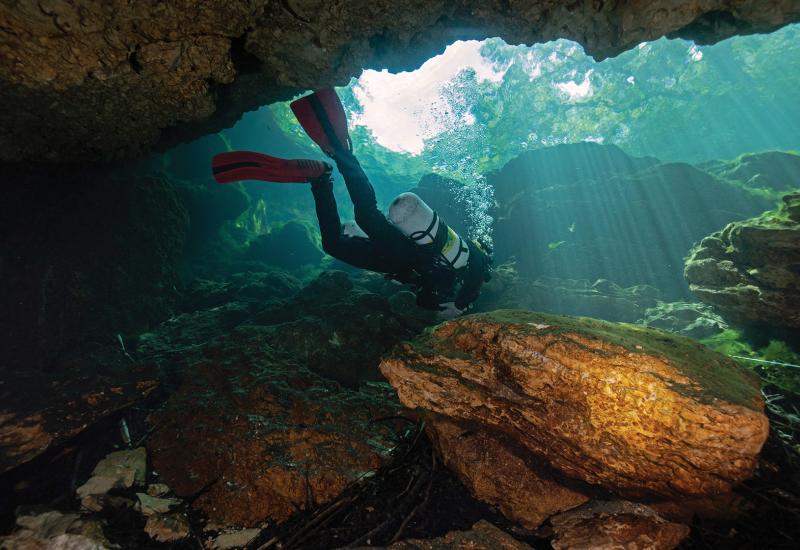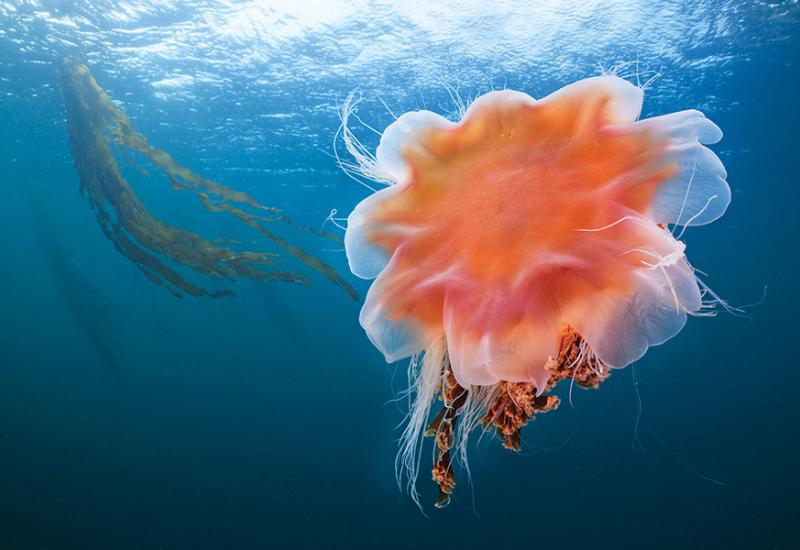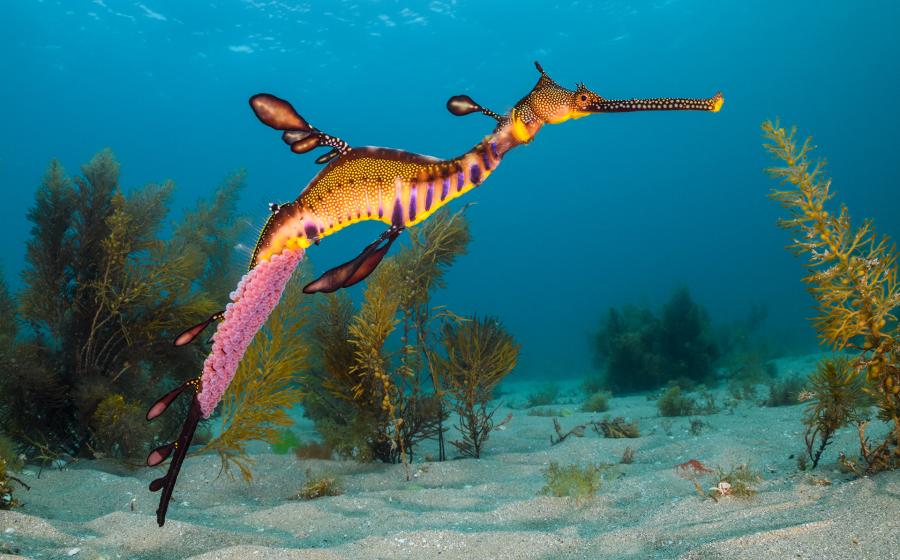Aggressor Fleet Owner’s Trip Report – Red Sea
Sponsored by: Wayne B. Brown, CEO Aggressor Fleet
When flying into Cairo, you can’t help but think of all the history this region has seen over the last couple thousand years. From the Great Pyramids, the Sphinx and King Tut to the Nile River, just to name a few, its influence on all our lives is just remarkable.
Our visit started with a couple of nights spent in Giza, where the Great Pyramids and the Sphinx are located. Even though I have been many times, the view is still as awesome as the first time I laid eyes on them, and I look forward to many future visits, as well. Our days in Giza put us in the right mindset for the incredible scuba diving that awaits us when we arrive at the Red Sea Aggressor in Port Ghalib.
A short flight from Cairo to Hurghada get us closer, but we still had a three-hour van ride to the yacht. Port Ghalib is a purpose-built, small, gated city on the southern coast of the Red Sea. Multiple hotels, restaurants and, of course, a marina are all part of this unique development. Once in Port Ghalib, we are greeted by the friendly Red Sea Aggressor staff and shown to our cabins, where we can drop our bags, start prepping our scuba gear and cameras, and prepare for the captain’s safety briefing.
The Red Sea Aggressor staff has completed all the necessary Egyptian port authority paperwork for us to depart at first light. We motor out to our first site for a standard ‘check out’ dive, where everyone can get comfortable with getting back into the water, check their equipment and weighting, and ease into the liveaboard lifestyle.
Marsa Shouna, our first destination, is only 30 minutes from our departure site, and everyone is ready to get wet! A pinnacle of corals filled with glass fish, numerous species of Red Sea butterflyfish, angelfish and lionfish greet us. The water is a nice 83 degrees Fahrenheit (28 degrees Celsius), and with the Red Sea’s salinity being four percent higher than most oceans, everyone realizes we need a few extra pounds in our weight pockets to reach proper buoyancy. After two dives, we enjoy a lunch break and slowly motor to our second dive site of the day, Shaab Abu Dabab. We enter the water and immediately see large gardens of dome corals and spectacular swim throughs, where the setting sun’s rays play through the openings.
Our second day starts at Daedalus Reef. We had motored all night to reach this large, round reef with a lighthouse built in the middle. The morning dives are spent kicking along the northern walls of the island. We descend one of the walls, looking out into the blue, and a school of 15 hammerheads come swimming by. It was a great introduction to this amazing dive site. As we enjoy the school of hammerheads, an oceanic manta ray comes through, enjoying the diver’s bubbles. The manta, as showing off, performs a large barrel roll right in front of us and continues on its way. What an exciting start for all of us!
The first afternoon dive is on the northwestern wall, where we visit the anemone gardens. Our photographers snap great shots of frenetic anemone fish. Our last dive of the day is along the south plateau. The setting sun offers plenty of light before we head back onboard, ready for what Chef Abdu has in store for dining.
Our next dive starts at 6AM on the north side of Daedalus Reef. We spot the schooling hammerheads again and another manta ray in the deep, electric blue water. A very large school of barracudas circle along the stunning vertical wall, which is covered in giant sea fans and black coral. The afternoon dives include a visit to the monumental elephant ear coral that covers most of the wall from the shallows down to 80 feet. After another fantastic dinner by Chef Abdu, Captain Abdullah safely motors us overnight to the Brother Islands.
We start at Little Brother Island and dive the beautiful gorgonian garden, continuing along a wall with numerous overhangs and beautiful displays of colorful soft corals. Our late morning and afternoon dives are located on the north plateau of the island. The north plateau is one of the most exciting dive sites of the entire itinerary, with extremely rich marine life, stunning corals and what we all want to see: oceanic whitetip sharks. We are rewarded with visits from oceanic whitetips on every dive at the Brothers Islands. These curious, distinctly shaped and shaded sharks, accompanied by their ever-present striped pilot fish, stay with us for most of our dives as our group’s photographers and videographers fill their camera memory cards. Upon our return, the staff sets up dinner on the Aggressor’s sundeck for ‘al fresco’ dining under the setting sun and stars.
Big Brother Island, just one mile from Little Brother, stands out for his high rocky profile with a lighthouse sitting atop it. The island is known worldwide for dramatic drop offs, wrecks and sharks. Our morning dives are on the south plateau and its eastern and western walls. Bannerfish, hundreds of coronet fish, sailfin tangs and blue mask butterfly fish cruise along with us. After lunch it’s time to dive the Numidia Wreck, located on the north side of the island. The Numidia was a cargo ship that had just passed through the Suez Canal in July 1901. Unfortunately, the captain was inattentive and ran up on the rocky shallows of the island; the vessel could not be refloated. Once all cargo was removed, it eventually slid down the wall to the sea floor, where it lays today. It is safely penetrated at multiple entry and exit points with lots of light coming through. We enter through the engine room, swimming through most of the length, and exit to a friendly greeting by a napoleon wrasse. We continue the dive along the northwestern wall, large schools of colorful anthias surrounding the healthy coral formations.
After another great dinner and lots of chatter about the exceptional, exciting diving we’ve had at the Brothers and Daedalus, we motor overnight night to the offshore reef of Elphinstone. Five miles from the coast of Marsa Alam, Elphinstone Reef is well known for it stunning plateaus to the north and south and its colorful walls.
Sea conditions are excellent for our last day of diving. The south plateau is covered in healthy corals and more schools of anthias, raccoon and exquisite butterfly fish, which swim along the wall among the divers. Our last two dives are also spent with four oceanic white tips circling under the Red Sea Aggressor. If these creatures are on your diving bucket list, as they were mine, you can get all the oceanic whitetip time you want! We’ve had several milestone divers this week. Rados achieved her 400th dive, Debbie and Bill achieved their Seven Sea Club membership, received for diving at least seven of the seas Aggressor travels to, and half the divers got their Iron Diver medals for completing every dive offered this week!
As it is with every charter, our adventure ended too quickly, but we have lots of memories that will last a lifetime we cannot wait to share with our friends back home.
For more information:
Click here for more information on Red Sea itineraries with Aggressor Fleet & Dancer Fleet or click here to check out the Raja Ampat and Belize Owner's Trip Report.
To dive with the owners, visit www.aggressor.com/dwo.php.










